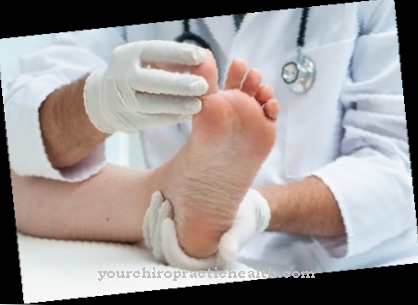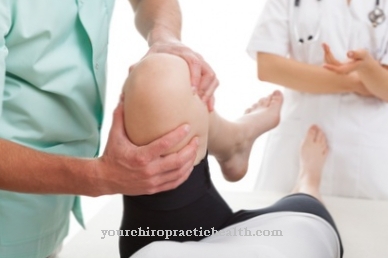Child screening are used for the early detection of diseases and developmental disorders in newborns, toddlers, children and adolescents. There are different regulations for their binding character in the individual federal states. However, Section 26 of the Social Code (SGB), fifth book (Section 26, SGB V), is the general legal basis for child preventive medical checkups.
What are the child screening examinations?

Child screening examinations are preventive measures to identify any illnesses, defects or developmental disorders of newborns, children and adolescents as early as possible. Appropriate therapies can then be initiated on this basis.
In addition to the early detection of diseases, a special focus of the preventive medical check-ups is the diagnosis of child abuse and sexual abuse. The examinations are carried out by children's, adolescent or family doctors. There are 12 examinations for children (from U1 to U11), the performance of which is age-dependent. Two examinations for adolescents follow from the age of 13 (J1 - J2). The child check-ups for newborns and toddlers are compulsory health insurance benefits. The services for examinations U1 to U9 are fully covered.
More and more health insurance companies are now assuming the costs for examinations U10 and U11. According to the guidelines of the Federal Joint Committee of Doctors and Health Insurance Funds, the medical measures for the early detection of diseases for children up to the age of 6 are specified. These examinations from U1 to U9 are documented in a "yellow booklet". The other preventive examinations for children and adolescents from U10 to J2 can be recorded in an additional "green booklet".
Function, effect & goals
Child screening starts when the child is born. From the first to the tenth minute, evaluations are carried out according to the so-called Apgar Score. This includes measuring and weighing the newborn as well as examining the umbilical cord blood. This first test is called APGAR.
The U1 takes place from the second to the fourth hour of life. The U1 is intended to reveal any defects in vital functions that affect motor skills, posture and muscle tone in order to be able to act quickly. To do this, the body is viewed, listened to and scanned. The U2 is used to screen for possible congenital metabolic diseases or hormonal disorders from the third to the tenth day of life. These two examinations are still being carried out in the clinic.
From U3 onwards, the pediatrician or family doctor is responsible for the examinations. In the fourth and fifth week of life, the doctor examines the nervous system and the various sensory organs as part of the U3. An ultrasound scan of the hips is also carried out. This appointment also includes an assessment of the kidneys and the urinary bladder as well as a vaccination consultation. The examinations U4 to U7 are carried out between the third and the 24th month of life. These examinations are mainly about the child's physical development.
The doctor focuses on possible motor disorders that are cerebral. The necessary vaccinations should also be carried out during this time. In 2008, another investigation, the U7a, was inserted between the U7 and U8 as a service provided by the statutory health insurance. The U7a, which is carried out between the 34th and 36th month of life, is mainly about the examination of the dental status, behavior, language development and the determination of possible visual defects.
The U8 in the 46th to 48th month of life is used to determine coordination, pronunciation and dental status. In the 60th to 64thOne year before school enrollment, the U9 is carried out to examine gross and fine motor skills, speech comprehension, and eyesight and hearing. The U10 and U11 examinations take place between the ages of seven and ten. They mainly focus on studying the child's physical and mental development. This relates to the recognition of possible behavior disorders, reading, spelling, arithmetic disorders, motor disorders or addictive behavior.
Health-conscious behavior should be supported. From the age of 13, the youth health examination begins with J1, which is completed with J2 at the age of 17. Both studies once again evaluate the general health situation, social behavior, puberty development, sexual behavior and motor development. The last preventive medical check-up J2 also serves, among other things, for accompanying advice on choosing a career.
Risks, side effects & dangers
The child medical check-ups are regulated differently in the different federal states despite a uniform legal basis. Section 26 of the Social Code Book V serves as the legal basis for the preventive medical check-up.
This legal basis only regulates that children up to the age of six have a legal right to general examinations and up to the end of the age of ten to an examination for the early detection of serious diseases that impair development. However, there is no obligation for these preventive examinations. In the federal states of Bavaria and Baden-Württemberg, the examinations up to the start of school have been made mandatory since 2008 and 2009, respectively.
The background is probably to put a stop to child abuse and the sexual abuse of children with the obligation to prevent them. In other federal states there is no obligation to take part in child preventive medical checkups. However, in some federal states there is an obligation for paediatricians to register if children have participated. The aim is to identify the children who did not take part centrally.
The parents of these children may be given a reminder to have the examination carried out. If no preventive medical check-up is carried out within four weeks, the responsible youth welfare office will be informed, which will decide how to proceed.
























.jpg)

.jpg)
